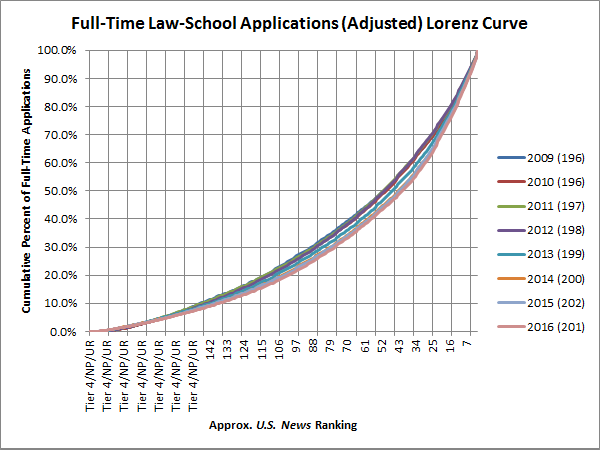In 2016 full-time law-school applicants showed more interest in fewer law schools, according to my modified Lorenz curve. The overall Gini coefficient is up as well.
A Lorenz curve measures the cumulative distribution of a quantity in order from the smallest recipient to the largest. Usually researchers use the distribution of income among households. I’ve modified the Lorenz curve according to the U.S. News and World Report rankings for the previous year because the rankings are an independent measurement of law-school eliteness as seen by LSAT takers and applicants roughly at the time that they apply. Here is what we see.

Compared to previous years, we can see that the curve has barely nudged to the right, indicating increased inequality among full-time law-school applications. This is predictable because we already know that more the 70 percent of the rise in applications can be attributed to U.S. News‘ static top 14 law schools.
A Lorenz curve can also be used to calculate a Gini coefficient, which is the area under the Lorenz curve divided by the total area of the right triangle representing a totally equal distribution of the quantity among the recipients. In 2015, the full-time applications Gini coefficient was .431, but this year it rose to .441, up 1 point. (These figures are irrespective of the U.S. News rankings.) I’ve written on calculating Gini coefficients recently here.
Last year I was surprised that application inequality was flat because I was convinced that everyone believed there was a shortage of applicants at elite law schools. This year, applicants trended back in that direction. Maybe it will accelerate into the future.
Information on this topic from previous years:
- “The U.S. News Law School Rankings Lorenz Curve” (December 23, 2014)
- “Full-Time Law-School Application Inequality Unchanged in 2015” (December 21, 2015)
3 comments